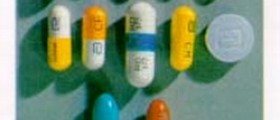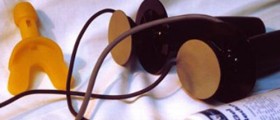Grand mal seizure is also well-known under the name tonic-clonic seizure, or generalized seizure. This seizure appears as a result of abnormal electrical activity in the nerve cells of the brain but is often caused by epilepsy. Sometimes it occurs as the outcome of a stroke, significantly low blood sugar, severe head injuries, brain tumors, or some infections such as meningitis or encephalitis.
Grand Mal Seizure Signs and Symptoms
This seizure is manifested through the loss of consciousness, body stiffening, and violent muscle contractions of arms and legs, and it involves the whole body and has two stages. In the tonic phase, the person loses consciousness and falls, while in the clonic stage rhythmic contractions begin and last about two minutes.
Symptoms that may appear are sensory warning signs which are usually called an aura. It includes smell, taste, visual, sensory hallucination, or dizziness. Rapid pulse and pallor can also warn the person of the coming seizure. At the beginning of the seizure, the person usually cries out. During the seizure, the person usually loses bowel and bladder control. Migraines and severe headaches are quite common after grand mal seizures.

Grand Mal Seizure Medications
Since the seizure involves the loss of consciousness and awareness, it is extremely important for the persons who suffer from this not to drive, swim without life preserves, or take baths instead of showers. Fractures, head injuries, and other injuries are frequent because of the person’s falling. Medication must be used regularly and properly.
The physicians prescribe the medications only if more than one seizure appears. In the beginning, they prescribe low dosages of a drug or drugs, and then gradually increase the dosage until they find the dosage which best controls the seizure.
The most common medications for grand mal seizures are Carbamazepine, Phenytoin, Valproic acid, Oxcarbazepine, and Lamotrigine. The physician may also prescribe other drugs such as Gabapentin, Topiramate, and Phenobarbital, as well as Zonisamide, Levetiracetam, Tiagabine, Pregabalin, and Felbamate.
All these medications vary from person to person, depending on how the patient reacts while using them. If any of these drugs do not have the effect, in that case, the doctor recommends the combination of two drugs.
- The annual incidence of epilepsy has been estimated at 50 per 100,000 with a prevalence of 5 to 10 per 1,000. According to the Centers for Disease Control and Prevention (CDC) in a 2010 report, epilepsy affects approximately 2.5 million people in the U.S. and each year accounts for $15.5 billion in direct costs (medical) and indirect costs (i.e., lost or reduced earnings and productivity).
- That genetic factor is involved in primary generalized tonic–clonic seizures is suggested by a familial incidence in 5% to 10% of such patients and, in particular families, by the inheritance of a generalized seizure disorder through specific genes or chromosomal regions. The most common form of generalized-onset epilepsy—juvenile myoclonic epilepsy—appears to be a polygenic disease. Expression of the phenotype requires the simultaneous inheritance of multiple genes.
- Valproic acid has been effective in partial and generalized seizures and is indicated as monotherapy and adjunctive therapy for complex partial seizures, which begin in a limited area of the brain. These seizures may occur either in isolation or in association with other types of seizures. The drug is also indicated for patients with simple and complex absence seizures and as an adjunctive therapy for patients with multiple seizure types, including absence seizures.
- In January 2010, the FDA approved lamotrigine extended-release tablets as once-daily, add-on therapy for epilepsy in patients 13 years of age and older with primary generalized tonic–clonic seizures and with partial-onset seizures with or without secondary generalization.
- Topiramate is an adjunctive therapy for adult and pediatric patients 2 to 16 years of age with partial-onset seizures or primary generalized tonic–clonic seizures in patients two years of age and older with seizures associated with Lennox–Gastaut syndrome. Topiramate tablets or sprinkle capsules are also indicated as initial monotherapy in patients 10 years of age and older with partial-onset or primary generalized tonic–clonic seizures.
When using the above-mentioned medications in treating grand mal seizures, side effects can appear. The most frequent side effects are fatigue, weakness, sleepiness, an increase in weight, speech problems, and sudden changes in moods.
The drugs which are used for the treatment of grand mal seizures usually lessen the effectiveness of contraceptive pills. Also, it is recommended for a pregnant woman to take only low doses of the anti-seizure drugs to prevent some child’s defects, although that rarely happens, and a high percentage of women with grand mal seizure has successful pregnancy.
- www.cdc.gov/epilepsy/about/first-aid.htm
- medlineplus.gov/druginfo/meds/a697012.html
- Photo courtesy of saxyequestrian05 by Flickr: www.flickr.com/photos/87742900@N00/7345916646/

















Your thoughts on this
Loading...